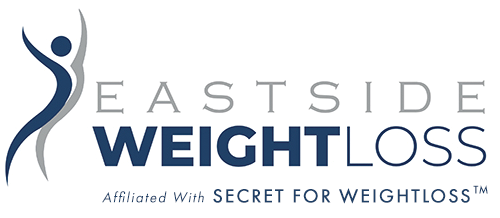What is a Healthy Weight to Lose

What is a Healthy Weight to Lose?
A healthy goal is usually thought of as losing 1-2 pounds per week, but the amount may vary depending on individual circumstances and levels of activity. If you work out regularly and make changes to your diet, like cutting down on portions or avoiding unhealthy foods, you will see good results over time without sacrificing your health goals.
Determine a Healthy Weight for You
It’s no secret that many of us strive to achieve an ideal weight. But how do you determine what a healthy goal actually looks like?
According to NIA, it’s important to consider various factors such as age and height when attempting to calculate your desired body fat percentage or ideal BMI score. Other helpful resources may include tracking apps that keep track of food intake and exercise-related activities in order for users to get more accurate readings about their current health status. Also, talking to a medical professional or consultant who specializes in dieting can be a good way to find out what changes need to be made to a person’s lifestyle to get the best results that are tailored to that person’s needs.
Develop a Safe and Sustainable Weight Loss Plan
Look for programs that have scientific support when searching for potential ones. Before starting any diet plan for weight loss, consult with your doctor about the best course of action given your specific needs and limitations.
Where Do You Start?
Eastside Weight Loss Clinic suggests conducting research before beginning a diet or fitness program.
Doing some background reading about the different ways to do things can help ensure success by giving people the information they need to choose the best option for their needs. Understanding what works best in terms of nutrition, lifestyle choices, and personal preferences ensures greater health benefits going forward, as well as reaching goals safely with minimum risk involved.
What Should a Safe and Successful Weight Loss Program Include?
Healthy eating is a crucial step in developing a safe and sustainable weight loss program. Eating nutritious foods that are low in calories and fat is the key to effective, long-term weight management. This means choosing lean proteins, fresh produce, whole grains, legumes, and dairy products as part of your meal plan.
It’s also important to limit processed foods high in saturated fats or added sugar, such as pastries and fried food items like French fries or white bread while adding plenty of fruits and vegetables into your diet instead. Additionally, it’s essential to have an understanding of portion control, selecting appropriate portions for meals based on gender, size, age, and activity level. Having healthier snacks available at regular intervals throughout one’s day rather than consuming large amounts during meals can help avoid overindulging when it comes to dinner, lunch, or breakfast.
Add social support in your life, whether it’s family members, friends, or colleagues. They can provide the encouragement that you may need to remain committed to your weight loss program and live a more healthful lifestyle.
Eastside Weight Loss Clinic can help make it easier with its comprehensive, personalized program that includes lifestyle changes, healthy eating plans, and nutrition counseling. Choose a program of realistic goals tailored specifically to your needs.
Improve Your Current Diet and Lifestyle
Drink more water, eat fewer processed foods high in sugar, fat, or salt, and reduce portion sizes to consume less energy from food.
Eating breakfast regularly is also essential for maintaining an ideal body weight. Skipping meals often leads to overeating at the next meal time, which could cause serious harm to your health and make it difficult to achieve your desired goals. Furthermore, engage in physically active activities daily.
There are several small modifications that you can make part of your routine without needing major commitments, such as enrolling in gym classes.
Designate Targets to Achieve Optimal Weight
Focus on one or two targets that provide the biggest impacts, such as consuming fewer calories, eating healthy food, and drinking plenty of water. Let’s say losing five pounds in a month with a proper diet plan regime can be an achievable goal for you.
For people looking to make lasting changes in their approach to weight loss, setting achievable targets is essential. Developing realistic and attainable goals can help sustain motivation throughout the process of losing and managing weight.
If you want to reduce and lose certain pounds, breaking it down into smaller target weights for each month would be an easier way to reach that goal. For example, if the goal is to lose 100 pounds in 12 months, this would mean losing 8.3 pounds per month. This smaller target makes it more achievable and manageable rather than trying to achieve the entire goal at once.
This will ensure steady progress without feeling overwhelmed or frustrated due to a lack of results over long periods of time. To ensure these are achievable, set your initial starting point rather high, which gives room for improvement while still providing visible rewards for completing them, something important when tackling such large-scale lifestyle modifications like this one!
Benefits of Working with Kirkland’s Expert Professionals
Working with weight loss experts can provide structure and accountability to your weight loss journey. Eastside Weight Loss Clinic’s health professionals are experienced in guiding individuals on their path towards healthy living, helping create individualized plans for short-term or long-term goals depending on the person’s needs.
Your dedicated professional will help you identify realistic benchmarks and discuss strategies that work best for you both physically and mentally so that any setback doesn’t knock you off course completely. Low-calorie options like counting macros are an effective way to ensure we have enough nutritional balance while cutting back calories without compromising our bodies’ essential needs.
When losing weight, it’s important to remember that slow and steady wins the race! Aim for a healthy rate of 1-2 pounds per week. Consider what has worked in the past, or start small.

